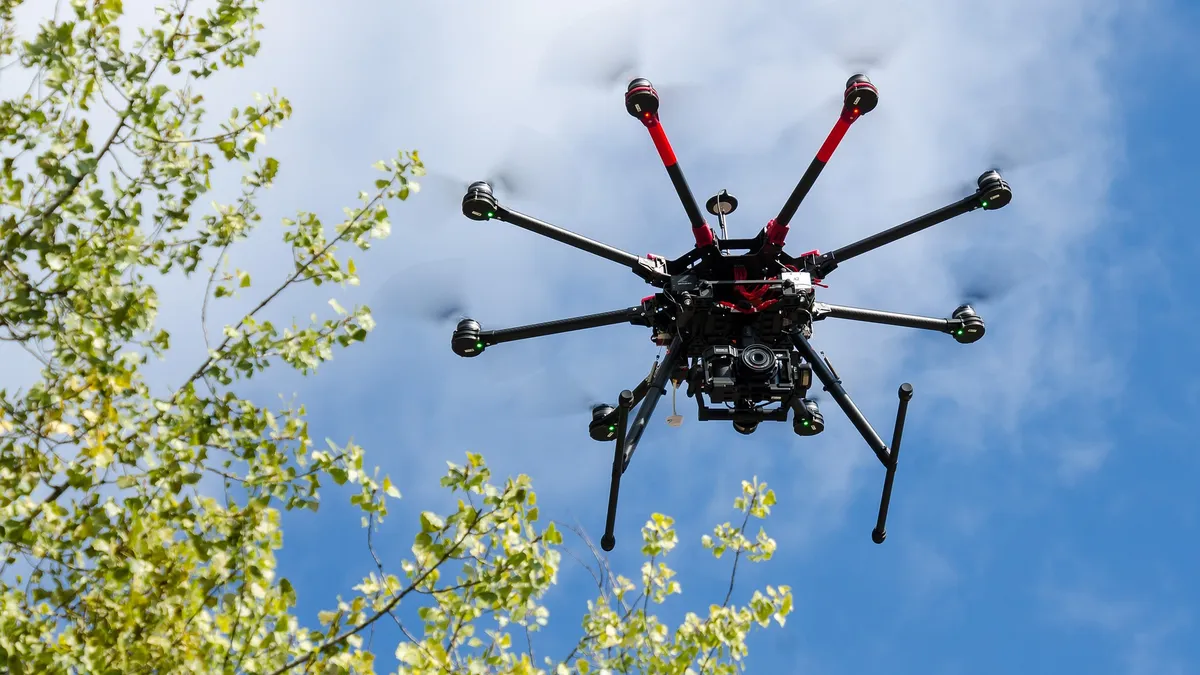Dive Brief:
-
Crews have begun construction on an 80-foot-tall, $1 million drone testing cage on Virginia Tech's main campus, in Blacksburg, VA, The Roanoke Times reported.
-
The space will be enclosed with netting supported by approximately 20 poles, allowing students and researchers to experiment with drones in a real-world outdoor setting but with fewer Federal Aviation Administration compliance requirements.
-
Set for completion in September, the cage will be the largest of its kind in the U.S., according to Mark Blanks, director of the university's Mid-Atlantic Aviation Partnership.
Dive Insight:
Such outdoor spaces are critical to advancing drone technology, especially as interest in it continues to grow. Because the area is technically enclosed, researchers can experiment with new hardware and software without having to fulfill all of the FAA's compliance requirements that would be required if there was nothing overhead.
Virginia Tech is not the first university to take this approach to outdoor drone testing. Earlier this summer, the University of Michigan announced plans to expand its testing facilities with a similar enclosure. That space, expected to wrap up construction later this year, will be adjacent to the forthcoming Ford Motor Company Robotics Building, which will have space for testing drones indoors.
More than $1 billion in drone sales have been recorded so far this year, according to Consumer Technology Association data reviewed by Axios. New rules from the FAA guiding their general commercial use are one driver of that adoption across industries, including construction. The FAA predicts that more than 400,000 commercial drones could be in flight over the next five years.
For construction alone, including maintenance and demolition, the number of drones in use will rise from 5,000 units in 2015 to 126,000 units by 2020, IHS Markit forecasts.
A 2016 report from the Association for Unmanned Vehicle Systems International ranked construction and infrastructure as two of the biggest drone users across all industries. That trend will likely continue, with estimates from PricewaterhouseCoopers that drone-powered input for infrastructure alone is worth $45.2 billion.











